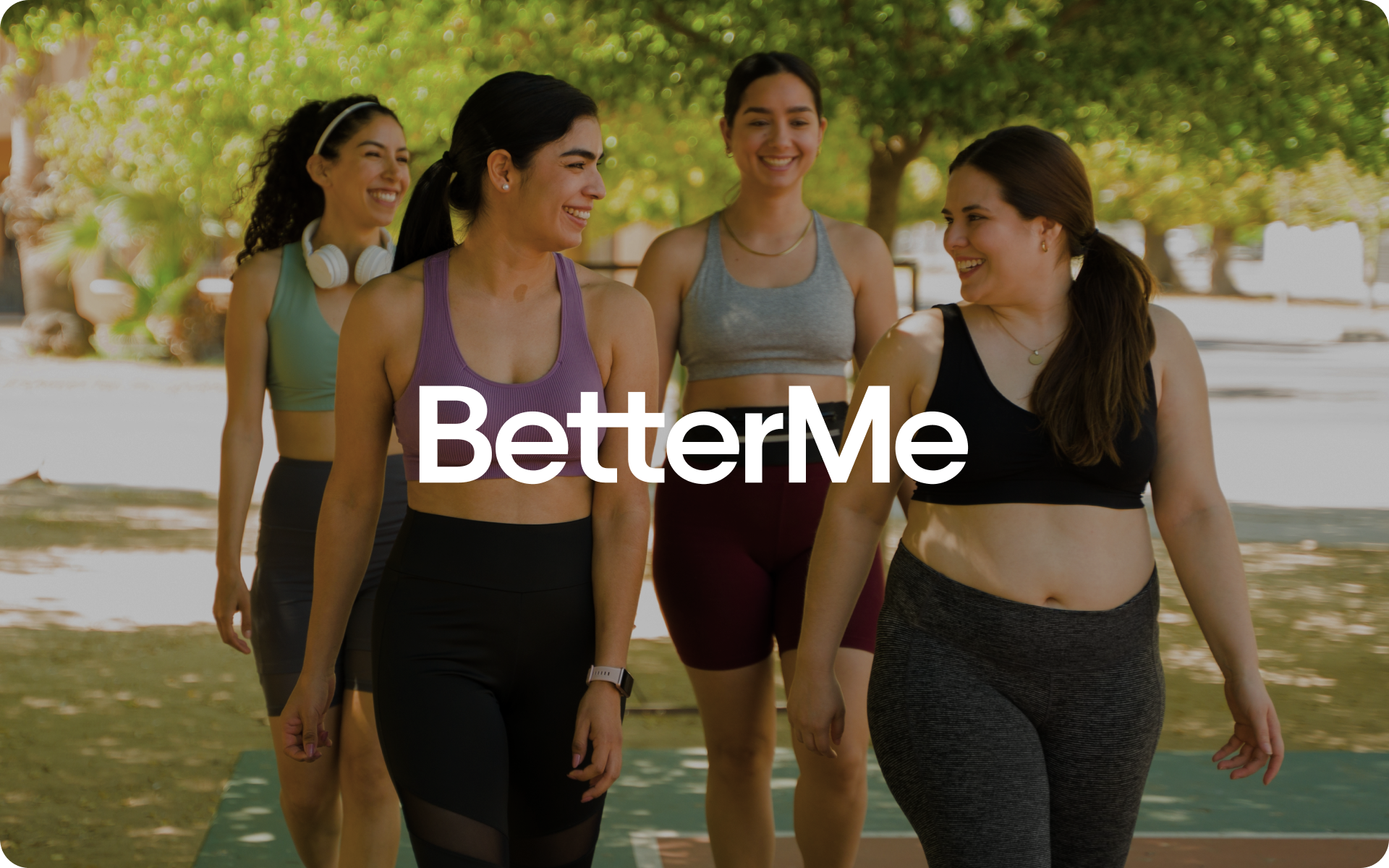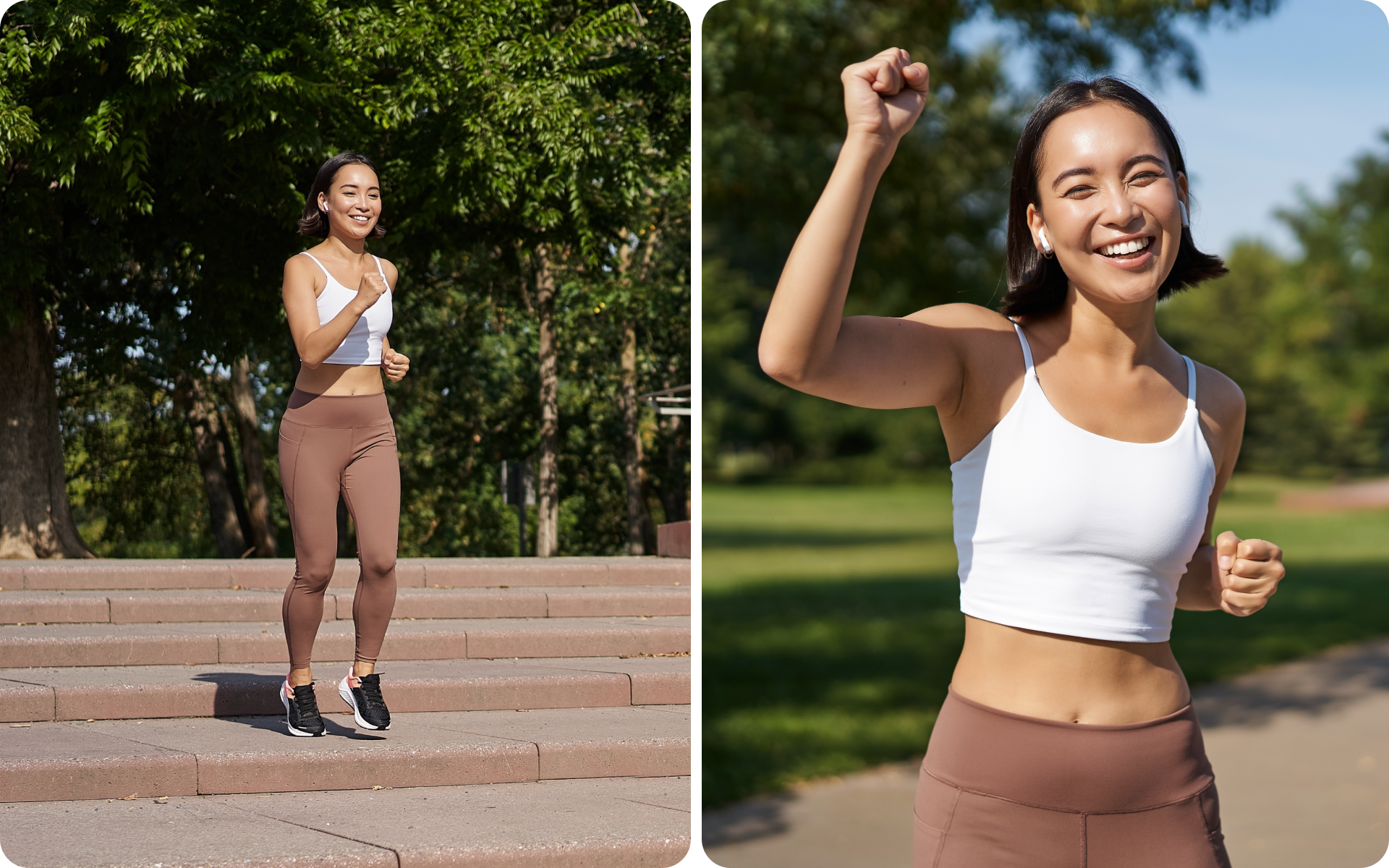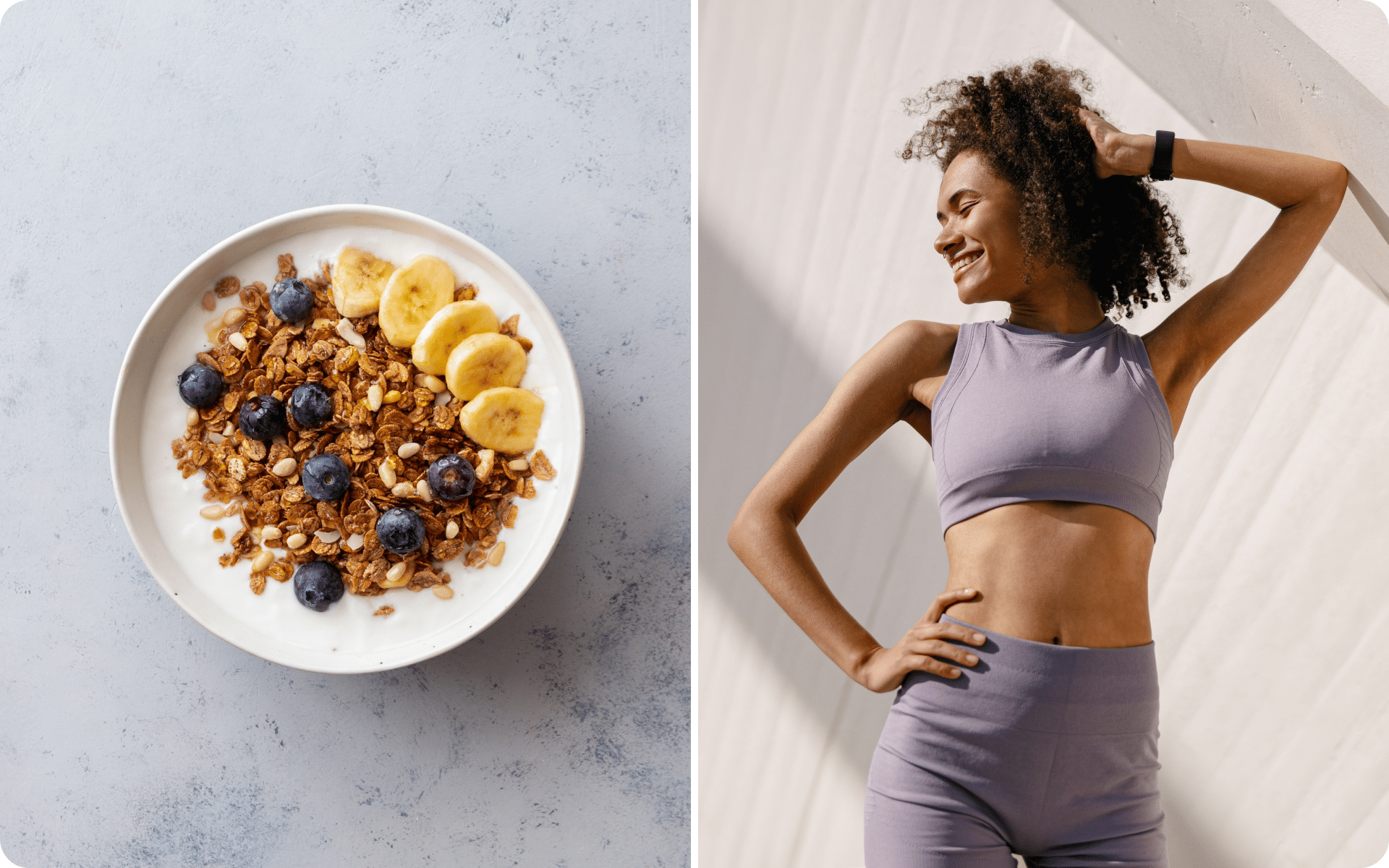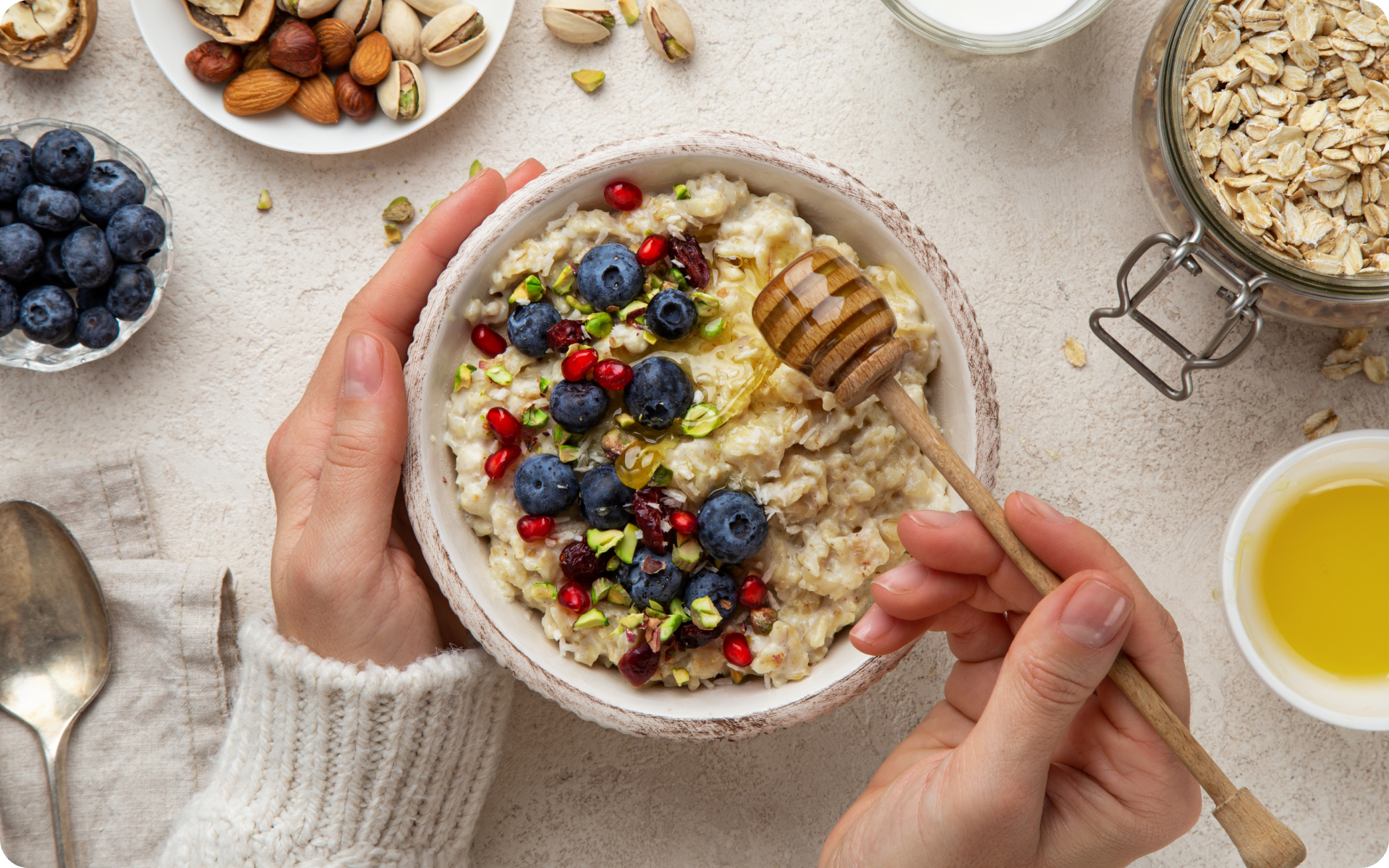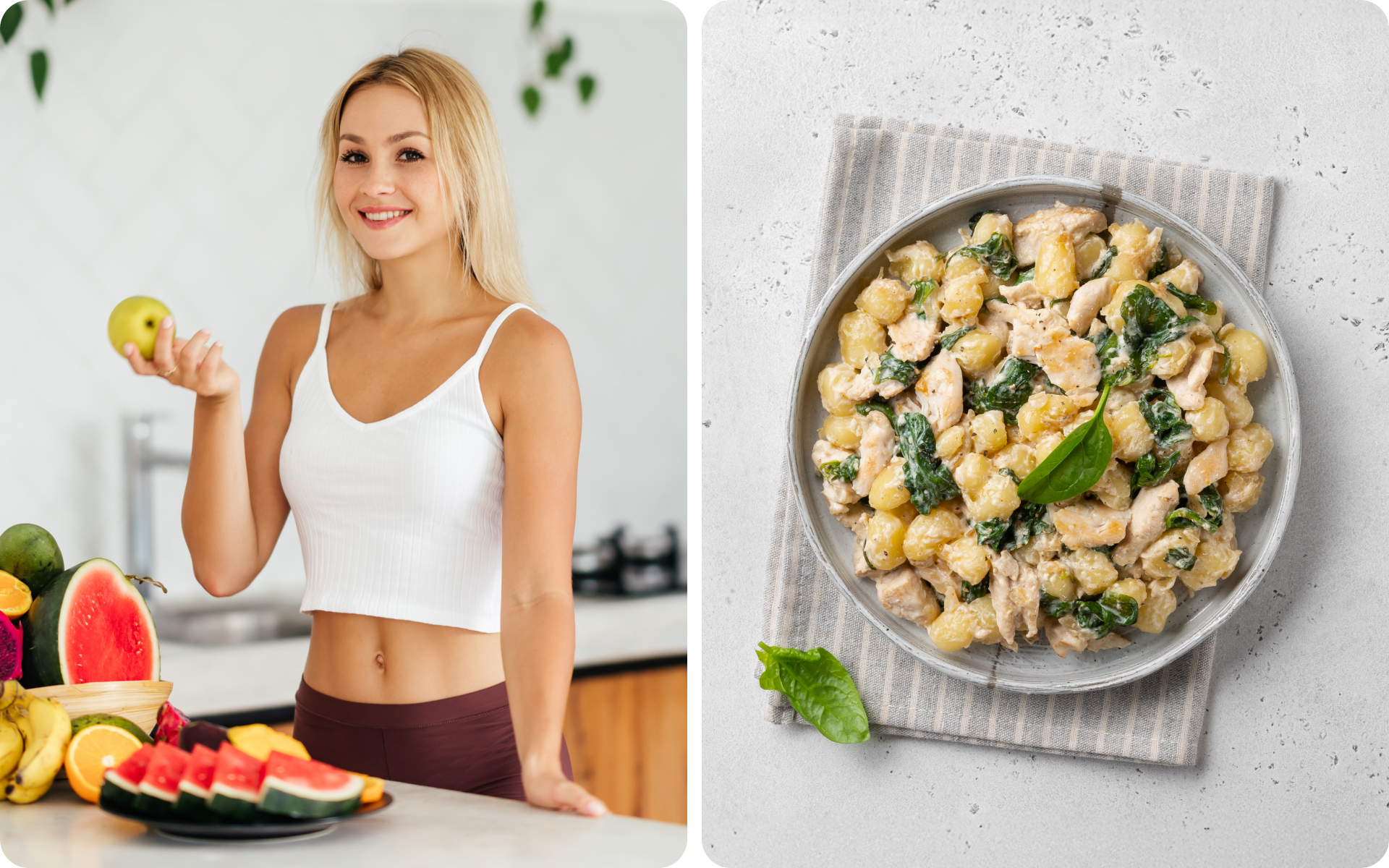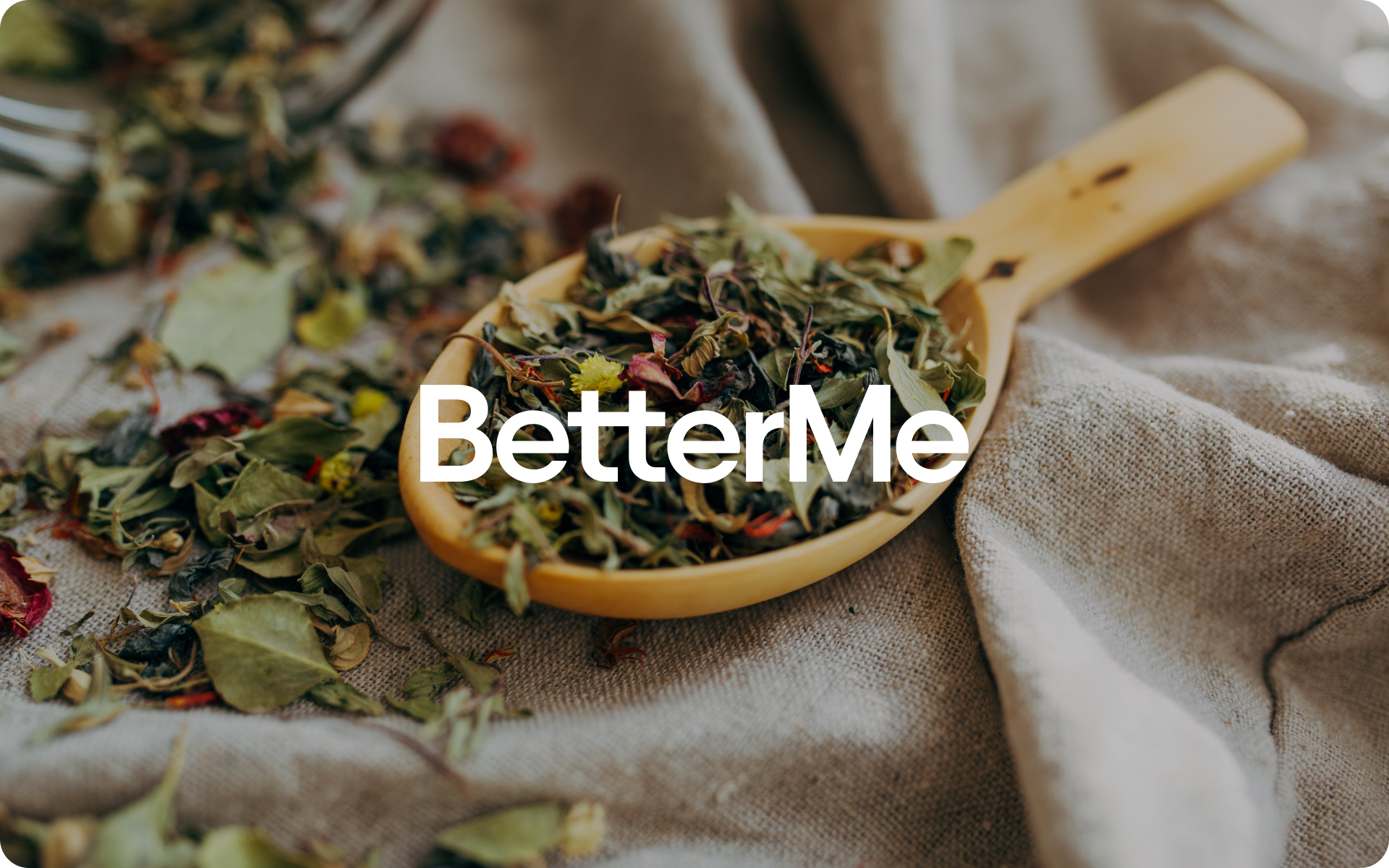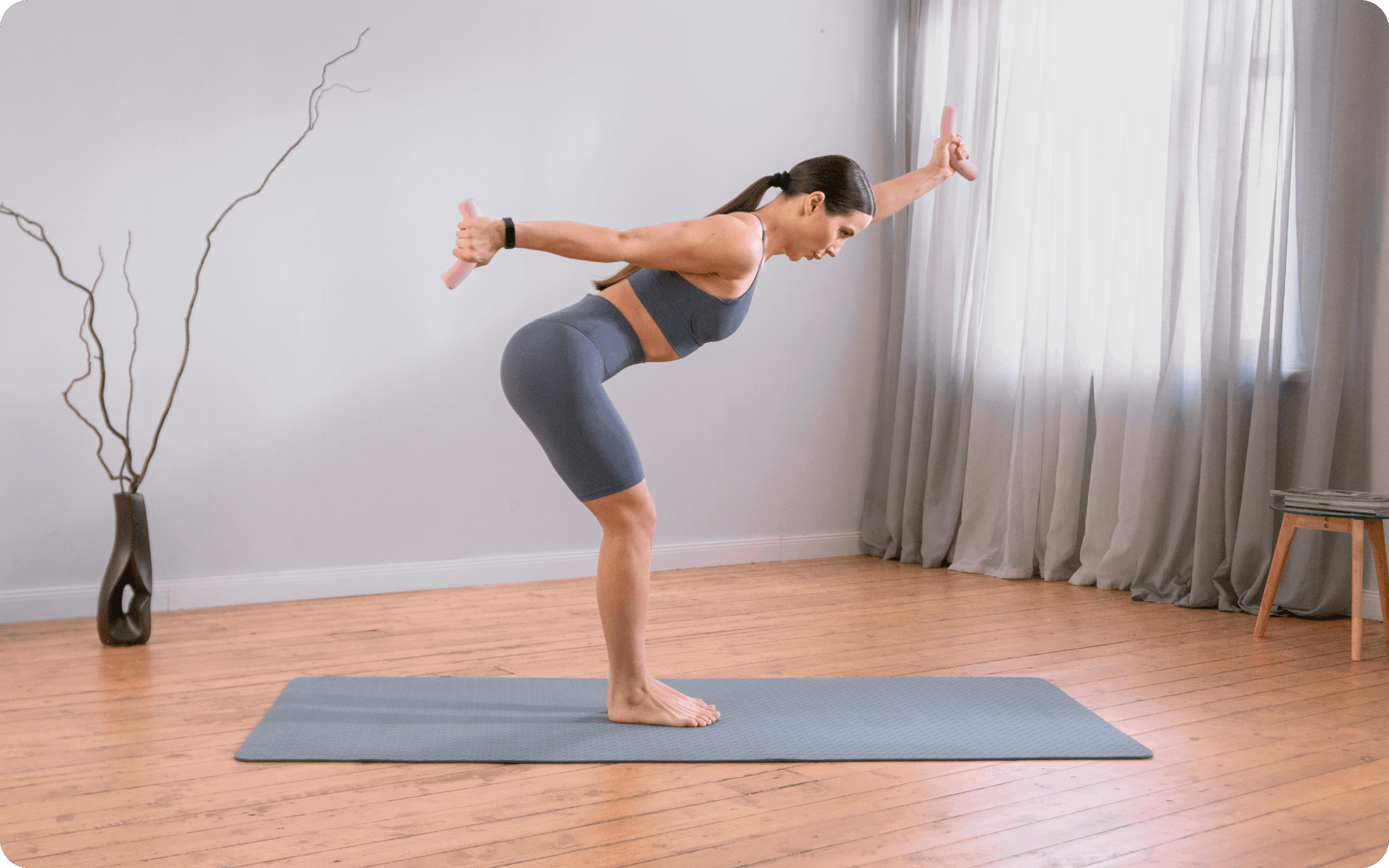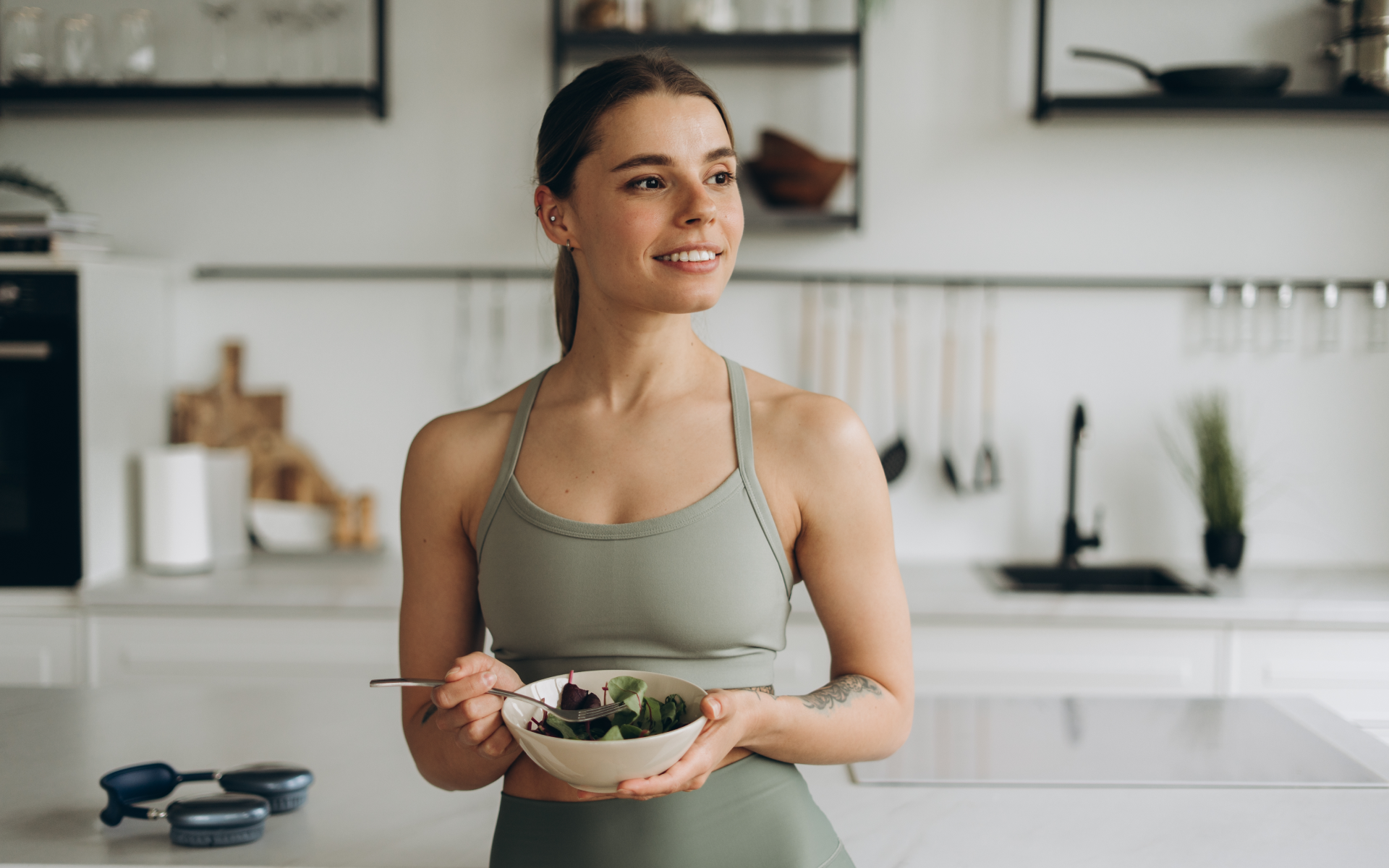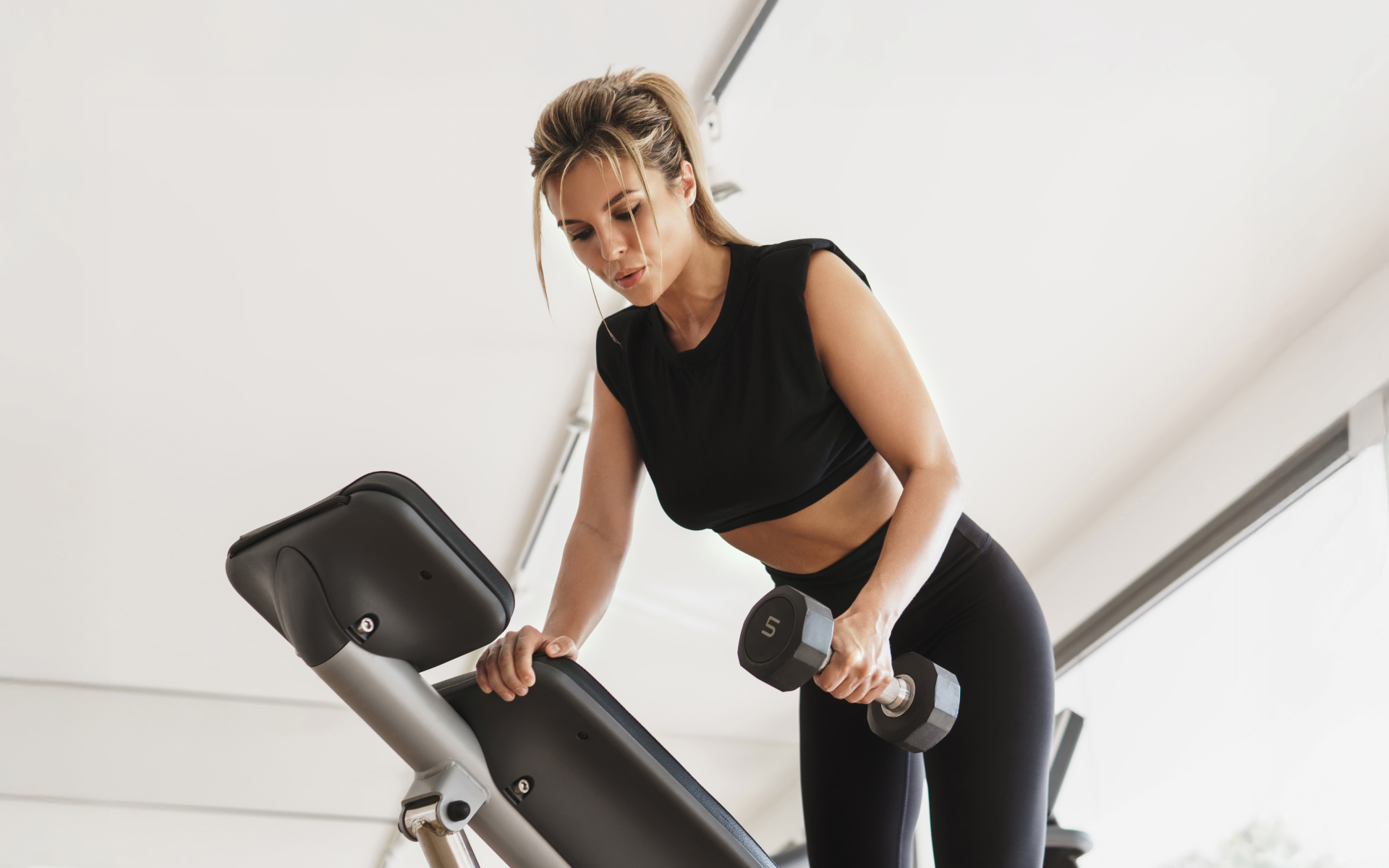If you’re struggling to lose weight, the 60-day weight loss challenge may be just the solution you need.
What makes it so special?
Well, some research has suggested that the average duration for a new habit to become automatic is around 66 days (although it can be shorter or longer for different people) (1). Therefore, sticking to this 60-day weight loss challenge might transform your entire lifestyle for the long term.
This guide provides just about everything you need for the challenge, including:
- Instructions on how to lose weight in a healthy way.
- How to work out effectively.
- How to set up a healthy diet.
- A balanced weight loss meal plan.
- An effective weight loss workout plan.
Let’s get started.
How to Lose Weight in 60 Days
To succeed with the 60-day weight loss challenge, you must know how to lose weight in a healthy way. You also need to know how to customize your weight-loss plan to your specific situation.
Follow these guidelines to do it right.
Healthy Weight Loss
Your goal shouldn’t be to lose weight fast.
Instead, you should focus on gradual weight loss; otherwise, you’ll be likely to regain that weight after the challenge. You should aim to lose approximately 1 to 2 pounds per week (0.5 to 1 kg), which will help you keep the weight off even after the challenge (2).
That means that in 60 days, you may lose around 8.5-17 pounds (- 8.5 kilograms).
So, how many calories should you burn in order to lose 1-2 pounds per week? Well, you’ll need to burn 500-1,000 calories more than the calories you consume every day (3).
Customize Your Plan Based on Your Specific Situation
In reality, the 60-day weight loss challenge isn’t as simple as burning 500-1,000 calories per day.
So many other factors come into play.
Various physiological, physical, and environmental factors can influence the amount of effort you need and the calories you burn. Such factors include:
Your metabolic rate
If you have a lower metabolic rate, you’ll burn fewer calories than someone with a higher metabolic rate who does the activities (4).
Body fat
Muscles burn more calories than fat when at rest (4).
Age
Young people tend to burn more calories than older people (4).
High altitude environments
You may have a higher metabolic rate at higher altitudes.
Post-workout calorie burn
This is also called excess post-exercise oxygen consumption (EPOC) and is more likely to occur after intense workouts (6).
Sex
Males tend to have a higher calorie burn rate than females (5).
To discover weight loss tips for women, check out our guide curated to help females lose weight and keep it off.
How Much Weight Can Be Lost on a 60-Day Weight Loss Challenge?
The Centers for Disease Control and Prevention (CDC) recommends losing weight at a safe and sustainable rate of 1-2 pounds per week (2). This means that in a 60-day weight loss challenge, it may be possible to lose 8-17 pounds.
However, the amount of weight an individual can lose on a 60-day weight loss challenge is dependent on several factors such as their starting weight, body composition, diet and exercise habits, and overall health.
How to Do a 60-Day Weight Loss Challenge
Now that you know the recommended suggestions for 60-day challenge weight loss programs, you’re ready to evaluate the guidelines for applying them in real life.
One key rule is that your program should involve both a workout and diet plan.
That’s because you need to reduce the amount of calories you consume through a balanced diet and burn off excess calories with a good workout. Therefore, you should follow these guidelines for your workout and diet plan.
How to Do Your Workouts for 60-Day Weight Loss
The right type of workout will help you burn more calories every day.
Here are the right types of workout to consider:
Aerobic Exercise
Aerobic exercises are quite effective in helping you lose weight.
One study examined the weight-loss effect of walking and jogging. The results showed significant weight-loss benefits for both men and women (7).
Various other aerobic exercises include swimming, biking, hiking, low-impact dance classes, kickboxing, and cardio machines (elliptical, rower, stair-climber).
Muscle-Building Exercises
You’re probably thinking that weight training offers no benefit in the 60-day weight loss challenge, but that’s completely wrong.
An interesting thing about weight training exercises is they activate hormonal responses that enhance body fat-burning. A small older study by the University of North Texas revealed a significant increase in growth hormone and testosterone with kettlebell training in resistance-trained men (8).
Increased muscle mass also enhances your basal metabolic rate (BMR) (9). This helps you burn more fat even while resting.
Sleep Long Enough
Sufficient rest is an essential part of working out as your muscles need time to recover (10).
In particular, getting enough sleep will play a crucial role in the 60-day weight loss challenge. This is based on scientific research that shows how sufficient sleep supports your health and helps keep your weight in check (11).
Adults need 7-9 hours of quality sleep per night (12).
Exercises to Do on a 60-Day Weight Loss Challenge
Different workouts burn different amounts of calories, so you may need to work out longer with a low-calorie-burn workout than a high-calorie-burn workout.
Here’s a useful estimation of the calories burned by a 155-pound (70 kg) person during various physical activities (13):
- Light gardening/ yard work: 162 calories/ 30 minutes or 324 calories/ 1 hour
- Heavy yard work (chopping wood): 216 calories/ 30 minutes or 432 calories/ 1 hour
- Dancing: 198 calories/ 30 minutes or 396 calories/ 1 hour
- Bicycling (12-13.9 mph): 288 calories/ 30 minutes or 576 calories/ 1 hour
- Bicycling (14-15.9 mph): 300 calories/ 30 minutes or 600 calories/ 1 hour
- Walking (3.5 mph): 133 calories/ 30 minutes or 266 calories/ 1 hour
- Walking (4 mph): 175 calories/ 30 minutes or 350 calories/ 1 hour
- Hiking: 216 calories/ 30 minutes or 432 calories/ 1 hour
- Running/ jogging (5 mph): 288 calories/ 30 minutes or 576 calories/ 1 hour
- Weight training (light workout): 108 calories/ 30 minutes or 216 calories/ 1 hour
- Weight lifting (vigorous): 216 calories/ 30 minutes or 432 calories/ 1 hour
- Swimming (general): 216 calories/ 30 minutes or 432 calories/ 1 hour
- Aerobics (high impact): 252 calories/ 30 minutes or 504 calories/ 1 hour
- Basketball (playing a game): 288 calories/ 30 minutes or 576 calories/ 1 hour
How to Plan Your Diet for a 60-Day Weight Loss Challenge
To plan the most effective 60-day weight loss challenge diet, you need to know how to pick the right foods.
Here’s how to do it.
Consider All Factors Beyond Weight Loss
If weight loss was the only issue in this program, you could literally go without food and lose weight, but that wouldn’t be healthy at all.
This is why you must consider many more aspects beyond weight loss.
Various factors to consider include:
- Your age, body size, sex, and activity level.
- A well-balanced diet with all vital nutrients.
- Is it a high-protein, low-calorie, low-carb, low-salt, or low-fat diet?
- Does it include alcohol?
- Is it appropriate for conditions like diabetes and heart disease?
- Is it easy to follow?
- Is it gluten-free for gluten-intolerant people?
- Is it halal or kosher?
- Do you need to pay for the diet plan or is it free?
- Is it vegan, vegetarian, or animal-based?
- Will you eat prepackaged food or homemade meals?
- Will you include supplements?
Eat a Sustainable Diet
For long-term results, follow a diet you can continue with after the challenge. This is because you can only sustain your weight-loss goals through realistic lifestyle changes, rather than following a fad diet (14).
The main thing to remember is to eat a diet that matches your daily calorie needs (15).
For males, these are some of the estimated calorie needs based on age and activity level:
- 19-40 years old – 2,400-2,600 calories (sedentary), 2,600-2,800 calories (moderately active), and 2,800-3,000 calories (active)
- 41-60 years old – 2,200 calories (sedentary), 2,400-2,600 calories (moderately active), and 2,600-2,800 calories (active)
- 61 years old and above – 2,000 calories (sedentary), 2,200-2,400 calories (moderately active), and 2,400-2,600 calories (active)
For females, these are some of the estimated calorie needs based on age and activity level:
- 19-40 years old – 1,800-2,000 calories (sedentary), 2,000-2,200 calories (moderately active), and 2,200-2,400 calories (active)
- 41-60 years old – 1,600-1,800 calories (sedentary), 1,800-2,000 calories (moderately active), and 2,200 calories (active)
- 61 years old and above – 1,600 calories (sedentary), 1,800 calories (moderately active), and 2,000 calories (active)
However, it’s important to remember that different food groups provide different amounts of energy, as indicated here (16):
- Fat: 9 calories per gram
- Alcohol: 7 calories per gram
- Carbohydrates: 4 calories per gram
- Proteins: 4 calories per gram
Avoid Dieting Mistakes
Some seemingly simple mistakes can affect this 60-day weight loss challenge.
Skipping meals is one such mistake.
It may seem counterintuitive, but skipping meals might make you add more weight. This is especially true if you skip breakfast (17).
Therefore, you should aim for at least three meals a day.
Another mistake is failing to consider the calories in beverages.
When you drink beverages, you need to compensate for the liquid calories by eating less. Not doing so can contribute to weight gain (18). Sticking to calorie-free beverages can make a big difference in your overall calorie intake.
Eating mindlessly is the third mistake to avoid.
You can consume a lot of calories through “eating amnesia” (19). This is mindlessly putting hand to mouth, such as eating from a box in front of the television.
Instead, you should choose appropriate portions while eating slowly and mindfully.
Looking for a way to break the vicious cycle of weight loss and tone up all the jiggly parts? Watch the extra pounds fly off and your muscles firm up with the BetterMe: Health Coaching app!
Foods to Eat or Avoid on a 60-Day Weight Loss Challenge
You’re unlikely to succeed with the 60-day weight loss challenge if you don’t know what foods to eat or avoid.
This knowledge will make your weight loss plan far easier as you’ll avoid foods that pack excessive calories. This means less work to burn off fat.
The Dietary Guidelines for Americans emphasizes eating more minimally processed whole foods, including (15):
- Whole grains (quinoa, whole wheat, oats)
- Vegetables
- Whole fruits (not fruit juice)
- Beans, nuts, seeds, fish, poultry, and other healthy protein sources
- Plant oils (vegetable oils such as olive, canola, and others)
- Water and naturally calorie-free beverages
On the other hand, you should try to avoid or limit the following types of foods on the 60-day weight loss challenge:
- Too much salt (high-salt diets are linked to obesity) (20)
- Sports drinks, soda, fruit drinks, and other sugar-sweetened beverages
- Fruit juice
- White pasta, white bread, white rice, and other refined grains
- Sweets and added sugars
- Potatoes (fried or baked)
- Beef, lamb, pork, and other red meats, especially fattier cuts
- Processed meats such as bacon, salami, ham, and sausage
- Highly processed foods such as fast food
Find out more about high-calorie burning foods in our previous blog, 32 Foods That Burn Belly Fat Fast.
60-Day Weight Loss Challenge Plan
Based on all those guidelines, you can set up an effective 60-day weight loss challenge plan (for meals and workouts).
To start off, here’s a useful meal plan.
60-Day Weight Loss Challenge Meal Plan
This 60-day weight loss challenge meal plan features approximately 1,200 calories per day. If your daily calorie requirement is more than that, you can simply take additional portions of each meal.
The meal plan features great nutritional balance and is geared toward healthy weight loss.
Days 1 and 2:
- Breakfast: 2 muffin-tin quiches, smoked cheddar, potato, and a cup of herbal chamomile health tonic
- Lunch: 1 serving of spicy slaw bowls, shrimp, and edamame
- Dinner: 1 bowl of Asian beef noodles and 1 kiwi
Days 3 and 4:
- Breakfast: 2 blueberry-pecan pancakes, 2 tbsp. nonfat Greek yogurt, and 1 tsp. maple syrup
- Lunch: 1 ½ cups of white turkey chili
- Dinner: 2 cups of slow-cooker pasta e fagioli soup
Days 5 and 6:
- Breakfast: 1 whole-wheat tortilla, 1 scrambled egg, and ½ cup black beans
- Lunch: two corn tortillas, ¼ sliced avocado, and ⅓ cup shredded chicken breast
- Dinner: 1 serving of stetson chopped salad, ½ slice whole-wheat toast, and 1 tsp. olive oil
Days 7 and 8:
- Breakfast: 2 blueberry-pecan pancakes, 2 tbsp. nonfat Greek yogurt, and 1 tsp. maple syrup
- Lunch: 1 serving of cod, tomato cream sauce, 2 cups mixed greens, and ½ cup easy brown rice
- Dinner: 1 serving of spaghetti squash, chicken, and avocado pesto
Days 9 and 10:
- Breakfast: 1 slice of peanut butter-banana cinnamon toast
- Lunch: 1/4 cup hummus, 1 ½ cups slow-cooker vegetable soup, and 6 seeded crackers
- Dinner: 1 serving of vegan coconut chickpea curry
Days 11 and 12:
- Breakfast: ¾ cup steel-cut oatmeal, 2 links country-style turkey sausage, and 1 cup blueberries
- Lunch: 1 slice bagel avocado toast, and 1 ½ cups slow-cooker vegetable soup
- Dinner: 2 servings (5 cups) of Indian-spiced cauliflower, and chickpea salad
Days 13 and 14:
- Breakfast: ½ cup scrambled egg whites, 1 slice whole-grain toast, 1 cup skim milk, and ½ cup blueberries
- Lunch: 1 serving of no-cook black bean salad
- Dinner: 1 serving of lamb chop with mash and vegetables
Days 15 and 16:
- Breakfast: 2 slices of whole-wheat toast, hot sauce, and 2 hard-boiled eggs
- Lunch: 1 serving of whole-wheat vegetable wrap
- Dinner: 1 serving of spicy jerk shrimp, and ½ cup easy brown rice
Days 17 and 18:
- Breakfast: 1 ½ cups blueberry-banana overnight oats
- Lunch: 1 serving of healthy chef’s salad and 2 tangerines
- Dinner: 1 serving of Hawaiian pork, 1 cup steamed broccoli, and 1 tsp. olive oil
Days 19 and 20:
- Breakfast: 1 toasted whole-grain frozen waffle, ½ cup nonfat ricotta cheese, and 1 cup sliced strawberries
- Lunch: 1 serving of vegetable and hummus sandwich
- Dinner: 1 serving of sheet-pan chicken, vegetables, and romesco sauce
Days 21 and 22:
- Breakfast: 1 serving of avocado-egg toast
- Lunch: 1 serving of green salad, edamame, and beets
- Dinner: 1 serving of eggs in tomato sauce, chickpeas, spinach, and ½ whole-wheat pita bread
Days 23 and 24:
- Breakfast: 1 serving of avocado-egg toast
- Lunch: 1 serving of green salad, edamame and beets
- Dinner: 1 serving (3 patties) of falafel, 2 cups mixed greens, and ½ cup sliced cucumber
Days 25 and 26:
- Breakfast: 1 cup raspberries, 1 cup nonfat Greek yogurt, and 1 tbsp. sliced almonds
- Lunch: 1 cup wild rice, 4 ounces grilled salmon, 1 cup wilted baby spinach, and ½ cup diced cantaloupe
- Dinner: 1 serving of salmon tacos, pineapple salsa, and broiled mango
Days 27 and 28:
- Breakfast: 1 cup raspberries, 1 cup nonfat Greek yogurt, and 1 tsp. honey
- Lunch: 1 serving of curried chicken apple wraps, and 1 medium pear
- Dinner: 1 serving of sheet-pan chicken, romesco sauce, and vegetables
Days 29 and 30:
- Breakfast: 1 light whole-grain English muffin, 1 cup skim milk, 1 wedge honeydew, and 2 slices Canadian bacon
- Lunch: 1 cup wild rice, 2 ½ cups kale salad, and 1 cup slow-cooker curried butternut squash soup
- Dinner: 1 serving of crispy oven-fried fish tacos
Days 31 and 32:
- Breakfast: 1 whole-grain toaster waffle, 2 slices of Canadian bacon, ¾ cup berries, and 1 cup skim milk
- Lunch: 1 bowl Asian beef noodles
- Dinner: 2 cups slow-cooker pasta e fagioli soup
Days 33 and 34:
- Breakfast: spinach-feta omelet with 6 egg whites, 1 cup chopped spinach, and 1 medium orange
- Lunch: 4 oz turkey burger, 2 slices tomato, ¼ cup baby spinach, and cucumber salad
- Dinner: 1 serving of Greek roasted fish, and vegetables
Read more: Tea as a Supportive Tool for Weight Loss and Well-being
Days 35 and 36:
- Breakfast: 1¼ cups nonfat/ soy milk, ½ cup plain instant oatmeal, and 1 tbsp chopped tart dried cherries
- Lunch: ½ (6-inch) whole-wheat pita bread, 2 falafel patties, ¼ cup sliced cucumber, and 1 cup mixed greens
- Dinner: 1 serving of zucchini noodles, pesto, and chicken
Days 37 and 38:
- Breakfast: 1 cup raspberries, 1 cup nonfat Greek yogurt, and 1 tbsp. sliced almonds
- Lunch: 1 1/2 cups slow-cooker vegetable soup, and 1 slice everything bagel avocado toast
- Dinner: 2 servings (5 cups) of Indian-spiced cauliflower, and chickpea salad
Days 39 and 40:
- Breakfast: 1 whole-grain toaster waffle, 2 slices of Canadian bacon, ¾ cup berries, and 1 cup skim milk
- Lunch: 4 ounces of sliced turkey breast, tomato-cucumber salad, and 1 medium orange
- Dinner: 4 ounces red snapper, 1 cup spaghetti squash, and 1 cup steamed green beans
Days 41 and 42:
- Breakfast: 1 slice peanut butter-banana cinnamon toast
- Lunch: ½ cup brown/ wild rice, 5 ounces grilled wild salmon, and 2 cups mixed baby greens
- Dinner: ½ cup sliced mushrooms, 4 ounces grilled halibut, and ½ cup warm unsweetened applesauce
Days 43 and 44:
- Breakfast: 1 whole-wheat English muffin, 1 scrambled egg, 1 slice vegan bacon, and ½ grapefruit
- Lunch: 2 pieces whole-wheat bread, 1 cup sliced zucchini, 1 slice reduced-fat provolone, and 3 fresh basil leaves
- Dinner: 1 serving of Mexican stuffed acorn squash, ¾ cup Mexican cauliflower rice
Days 45 and 46:
- Breakfast: 8″ whole-wheat tortilla, 3 scrambled egg whites, and ½ cup diced tomato
- Lunch: 6″ whole-wheat pita bread, ½ cup no-salt-added canned chickpeas, and ¼ cup grated carrots
- Dinner: 2 cups slow-cooker pasta e fagioli soup
Day 47 and 48:
- Breakfast: 2 blueberry-pecan pancakes, 2 tbsp. nonfat Greek yogurt, and 3 tbsp. blueberries
- Lunch: 1 cup easy brown rice, 1 serving of jerk chicken, and pineapple slaw
- Dinner: 1 serving of taco spaghetti squash boats
Days 49 and 50:
- Breakfast: 1 slice of peanut butter-banana cinnamon toast
- Lunch: 6 seeded crackers, 1 ½ cups slow-cooker vegetable soup, and 3 tbsp. hummus
- Dinner: 1 serving of ginger roasted salmon, ½ cup cauliflower rice, and broccoli
Days 51 and 52:
- Breakfast: ¼ cup quinoa, ¼ cup calcium-fortified orange juice, and 4 chopped dried apricot halves
- Lunch: 1 serving of vegetable and hummus sandwich
- Dinner: 1 serving of citrus poached salmon, asparagus, and ¾ cup cauliflower rice
Days 53 and 54:
- Breakfast: 1 cup bran flakes, 1 cup nonfat milk, and 2 tbsp dried cranberries
- Lunch: 1 ½ cups slow-cooker curried butternut squash soup, 5 seeded crackers, and 3 tbsp. hummus
- Dinner: 1 serving of garlic-lime pork, faro, and 1 cup tangy broccoli
Days 55 and 56:
- Breakfast: ¼ cup nonfat ricotta, 1 whole-wheat English muffin, and ½ cup sliced grapes
- Lunch: 1 serving of curried chicken apple wraps, and 1 medium pear
- Dinner: 1 serving of zucchini noodles, pesto, and chicken
Days 57 and 58:
- Breakfast: 1 ½ cups blueberry-banana overnight oats
- Lunch: 1 serving of vegetable and hummus sandwich
- Dinner: 1 serving of butternut squash soup, avocado, chickpeas, and 1 slice whole-wheat toast
Days 59 and 60:
- Breakfast: 1 frozen whole-grain pancake, ½ sliced apple, and 1 cup nonfat/ soy milk
- Lunch: 1 serving of green salad, edamame, and beets
- Dinner: 1 serving of chickpea curry, 1 serving of turmeric-roasted cauliflower, and ½ cup brown rice
60-Day Weight Loss Challenge Workout Plan
Based on the knowledge of effective workouts, the best workout plan is a 60-day challenge weight loss bodybuilding combination.
The specific exercises in this 60-day weight loss challenge workout plan are based on an estimated calorie burn ranging from 150-250 calories per day for a 150-pound (68 kg) man. As your fitness capacity increases, you can increase the intensity or duration of workouts to burn more calories.
It also features workout variations to avoid overuse injuries.
When it comes to weight loss, progress is made by inches, not miles, so it’s much harder to track and a lot easier to give up. The BetterMe: Health Coaching app is your personal trainer, nutritionist, and support system all in one. Start using our app to stay on track and hold yourself accountable!
Week 1
- Sunday: Rest
- Monday: Weight training – barbell front squats (5 sets, 6-10 reps)
- Tuesday: Cardio – jogging (5 mph, 30 minutes)
- Wednesday: Weight training – Romanian deadlifts (5 sets, 6-10 reps)
- Thursday: Rest
- Friday: Weight training – pull-ups (5 sets, 10-15 reps)
- Saturday: Cardio – cycling (>10 mph, 30 minutes)
Week 2
- Sunday: Rest
- Monday: Weight training – Romanian deadlifts (5 sets, 6-10 reps)
- Tuesday: Cardio – swimming (slow freestyle, 30 minutes)
- Wednesday: Weight training – single-arm dumbbell bench presses (5 sets, 6-10 reps)
- Thursday: Rest
- Friday: Weight training – conventional deadlifts (5 sets, 6-10 reps)
- Saturday: Cardio – aerobics (30 minutes)
Week 3
- Sunday: Rest
- Monday: Weight training – chest-supported dumbbell rows (5 sets, 6-10 reps)
- Tuesday: Cardio – walking (4.5 mph, 30 minutes)
- Wednesday: Weight training – Bulgarian split squats (5 sets, 6-10 reps)
- Thursday: Rest
- Friday: Weight training – single-arm dumbbell overhead presses (5 sets, 6-10 reps)
- Saturday: Cardio – elliptical trainer (30 minutes)
Week 4
- Sunday: Rest
- Monday: Weight training – inverted suspension rows (5 sets, 6-10 reps)
- Tuesday: Cardio – mowing the lawn by hand, or chopping/splitting wood, (30 minutes)
- Wednesday: Weight training – dumbbell lunges (5 sets, 6-10 reps)
- Thursday: Rest
- Friday: Weight training – weighted pull-ups (5 sets, 6-10 reps)
- Saturday: Cardio – rope jumping (30 minutes)
Week 5
- Sunday: Rest
- Monday: Weight training – dumbbell military presses (5 sets, 6-10 reps)
- Tuesday: Cardio – martial arts (karate/ kickboxing/ judo, 30 minutes)
- Wednesday: Weight training – machine pull-downs (5 sets, 6-10 reps)
- Thursday: Rest
- Friday: Weight training – push-ups (5 sets, 10-15 reps)
- Saturday: Cardio – competitive football (30 minutes)
Week 6
- Sunday: Rest
- Monday: Weight training – leg presses (5 sets, 10-15 reps)
- Tuesday: Cardio – basketball game (30 minutes)
- Wednesday: Weight training – body weight squats (5 sets, 10-15 reps)
- Thursday: Rest
- Friday: Weight training – dumbbell flat bench (5 sets, 10-15 reps)
- Saturday: Cardio – dancing (30 minutes)
Week 7
- Sunday: Rest
- Monday: Weight training – shoulder press machine (5 sets, 10-15 reps)
- Tuesday: Cardio – competitive volleyball (30 minutes)
- Wednesday: Weight training – deadlifts (5 sets, 10-15 reps)
- Thursday: Rest
- Friday: Weight training – cable curls (5 sets, 10-15 reps)
- Saturday: Cardio – ski machine (30 minutes)
Week 8
- Sunday: Rest
- Monday: Weight training – weighted dips (5 sets, 10-15 reps)
- Tuesday: Cardio – stationary rowing machine (30 minutes)
- Wednesday: Weight training – lat pull-downs (5 sets, 10-15 reps)
- Thursday: Rest
- Friday: Weight training – dumbbell lunges (5 sets, 10-15 reps)
- Saturday: Cardio – stair-step machine (30 minutes)
Week 9
- Sunday: Rest
- Monday: Weight training – shoulder press machine (5 sets, 10-15 reps)
- Tuesday: Cardio – stationary rowing machine (30 minutes)
- Wednesday: Weight training – lat pull-downs (5 sets, 10-15 reps)
How to Lose 5lbs in 7 Days
Losing 5lbs in 7 days may not be a realistic or sustainable goal for everyone. However, if you’re determined to lose a significant amount of weight in a short time frame, here are some tips that can help:
Dietary Changes
- Calorie Deficit: Aim to consume 500-1,000 fewer calories than your daily maintenance level. Use a calorie calculator to determine your needs.
- Hydration: Drink plenty of water—about 8-10 glasses a day. Staying hydrated can boost metabolism and help control hunger (21).
- Balanced Meals: Follow the 30/30/30 rule—one-third of your meal should be protein (such as chicken, fish, tofu), one-third should be vegetables (leafy greens, broccoli), and one-third should be whole grains or fruits (quinoa, berries).
- Portion Control: Use smaller plates to avoid overeating and focus on mindful eating techniques.
Exercise Routine
- Cardio Workouts: Engage in at least 30 minutes of cardio each day. Activities such as running, cycling, or brisk walking can burn calories and accelerate weight loss (22).
- Strength Training: Incorporate strength exercises 3-4 times a week to build muscle and increase metabolic rate (23). Focus on compound movements such as squats, lunges, and push-ups.
- Active Lifestyle: Increase your overall activity level—take the stairs, walk instead of driving short distances, and aim for 10,000 steps a day.
Learn more about the benefits of aerobic exercises for your weight and health in our guide, Fat-Burning Exercises at Home.
Lifestyle Adjustments
- Sleep: Ensure you get 7-9 hours of quality sleep each night to support weight loss and good health (24).
- Stress Management: Practice relaxation techniques such as meditation or yoga to manage stress, which can otherwise lead to weight gain (25).
- Consistency and Patience: Stick to your plan consistently and be patient with the process. Quick fixes are often unsustainable.
Read more: Can You Gain Weight from Not Eating? Uncover the Surprising Truth
FAQs
What is the 30/30/30 rule for weight loss?
The 30/30/30 rule for weight loss is a popular guideline that suggests dividing your daily food intake into three equal parts: one-third for protein, one-third for vegetables, and one-third for fruits or grains. This balanced approach ensures that you get enough essential nutrients while also controlling your calorie intake.
Following the 30/30/30 rule can help with weight loss as it promotes a well-rounded and nutritious diet without drastically cutting out any food groups. It also encourages portion control, which can be helpful for managing caloric intake.
Is losing 4lbs a week healthy?
Losing 4lbs a week is considered to be more than the recommended safe and sustainable rate of weight loss. Losing weight too quickly can lead to muscle loss, nutrient deficiencies, and other health complications (26).
It’s important to prioritize overall health and wellness rather than just focusing on the number on the scale. Instead of trying to lose a specific amount of weight in a short time frame, aim for gradual and steady progress through healthy lifestyle changes.
A more realistic and sustainable goal would be losing 1-2 lbs per week, which can add up to significant weight loss over a 60-day period.
Consulting a healthcare professional or registered dietitian can also help determine a safe and realistic weight loss goal based on individual needs and circumstances. Remember, slow and steady wins the race when it comes to sustainable weight loss.
Can I lose 10lbs in a month?
Aiming to lose 10 pounds in a month can be feasible for some. It’s slightly above the recommended 1-2 pounds per week, but likely still within a safe and sustainable range. To achieve this weight loss goal, you may need to create a calorie deficit (27) of approximately 1,000 calories per day through a combination of dietary changes and exercise.
Rapid weight loss can lead to muscle loss, nutritional deficiencies, and other health issues. It’s essential to prioritize health over speed (26). Sustainable weight loss will ensure you maintain your progress in the long term.
The Bottom Line
A 60-day weight loss challenge is a great way to kickstart a healthier lifestyle and reach your weight loss goals. However, the amount of weight you can lose during this time frame depends on various individual factors. It’s important to focus on overall health and well-being rather than just the number on the scale.
By making sustainable changes to your diet, exercise routine, and overall lifestyle, you can achieve steady and long-lasting weight loss results. Remember to consult a healthcare professional or registered dietitian for personalized advice and support on your weight loss journey.
DISCLAIMER:
This article is intended for general informational purposes only and does not serve to address individual circumstances. It is not a substitute for professional advice or help and should not be relied on for making any kind of decision-making. Any action taken as a direct or indirect result of the information in this article is entirely at your own risk and is your sole responsibility.
BetterMe, its content staff, and its medical advisors accept no responsibility for inaccuracies, errors, misstatements, inconsistencies, or omissions and specifically disclaim any liability, loss or risk, personal, professional or otherwise, which may be incurred as a consequence, directly or indirectly, of the use and/or application of any content.
You should always seek the advice of your physician or other qualified health provider with any questions you may have regarding a medical condition or your specific situation. Never disregard professional medical advice or delay seeking it because of BetterMe content. If you suspect or think you may have a medical emergency, call your doctor.
SOURCES:
- The Importance of Creating Habits and Routine (2019, ncbi.nlm.nih.gov)
- Steps for Losing Weight | Healthy Weight and Growth (2023, cdc.gov)
- Weight loss: 6 strategies for success (2024, mayoclinic.org)
- Metabolism (2023, betterhealth.vic.gov.au)
- Examining Variations of Resting Metabolic Rate of Adults: A Public Health Perspective – PMC (2015, ncbi.nlm.nih.gov)
- 7 Things to Know About Excess Post-exercise Oxygen Consumption (EPOC) (2014, acefitness.org)
- Aerobic exercise alone results in clinically significant weight loss for men and women: Midwest Exercise Trial-2 (2013, ncbi.nlm.nih.gov)
- The Acute Hormonal Response to the Kettlebell Swing Exercise (2014, journals.lww.com)
- Strength Training for Fitness and Weight Loss (2014, issaonline.com)
- Exploring the Science of Muscle Recovery (n.d., blog.nasm.org)
- Sleep Deprivation: Effects on Weight Loss and Weight Loss Maintenance (2022, ncbi.nlm.nih.gov)
- How much sleep do I need? (2019, nichd.nih.gov)
- Calories burned in 30 minutes of leisure and routine activities (2021, health.harvard.edu)
- Which diet is best for long-term weight loss? (2018, health.harvard.edu)
- Dietary Guidelines for Americans (2020, dietary guidelines.gov)
- Calories (2022, ncbi.nlm.nih.gov)
- Breakfast: Is It the Most Important Meal? (2023, webmd.com)
- Liquid calories, energy compensation, and weight: what we know and what we still need to learn (2014, ncbi.nlm.nih.gov)
- Why Am I Binge Eating? (2023, webmd.com)
- High Salt Intake. Independent Risk Factor for Obesity? (201-5, ahajournals.org)
- Narrative Review of Hydration and Selected Health Outcomes in the General Population (2019, ncbi.nlm.nih.gov)
- The (Many) Benefits of a Cardio Workout (2020, clevelandclinic.org)
- Strength training: Get stronger, leaner, healthier (2023, mayoclinic.org)
- Obesity and Stress: A Contingent Paralysis (2022, ncbi.nlm.nih.gov)
- Good Sleep for Good Health (2021, newsinhealth.nih.gov)
- Risks Associated With Excessive Weight Loss (2024, ncbi.nlm.nih.gov)
- Optimal Diet Strategies for Weight Loss and Weight Loss Maintenance (2021, ncbi.nlm.nih.gov)

